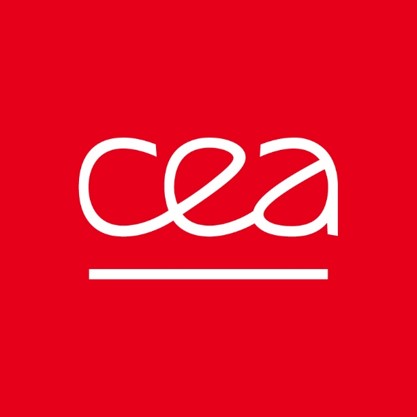-
Aeronautics - Aerospace - Defence
-
Chemistry - Materials
-
Complex systems and software engineering
-
Energy, Ecology, Environment
-
Quality of life - Health - Food
Service de physique de l'état condensé
Research unit
The Condensed Matter Physics Laboratory (SPEC) is a CEA-CNRS mixed unit (UMR 3680) which is part of the DRF/IRAMIS of CEA Saclay and INP at CNRS.
The physic of condensed matter is one of the biggest research themes conducted at SPEC, from its fundamental aspects to its various applications. The research includes a variety of subjects on complex systems and statistical physics, nanophotonic, nanoelectronic, nanomagnetism and oxydes, quantronics and quantum technologies. Theoretical and experimental approaches at SPEC are diverse and allows a wide range of scientific research at the nano-scale to macroscopic objects. Many activities of this laboratory benefit from many platforms: cryogenic, UBM (for ultra-bas bruit magnétique or very low magnetic noise), mecanical and nanofabrication workshop...
Having multiple scientific publications, SPEC is also a meeting point for technological and patent transfer. The laboratory is part of many collaborations at the national level (CNRS, CEA, Paris-Saclay university...) as well as at the international level.
Innovation themes
- Energy, Ecology, Environment
- Instrumentation, electronics, robotics and cobotics
- Complex systems and software engineering
- Modelling and simulation
- Smart grid
- Quality of life - Health - Food
- Chemistry - Materials
- Aeronautics - Aerospace - Defence
- Photonics - optical materials, application nanotechnology
- Mineral (materials, nanomaterials)
- Energy
- Physical chemistry (electrochemistry, thermochemistry...)
- Therapeutic technologies (drugs, genetics, biomarkers, biomolecules, etc.)
- New energy sources and production system
Route de l'Orme aux Merisiers
CEA - Saclay, Bâtiment 772
91191 GIF-SUR-YVETTE
Expertises
- quantum electronic and nanoelectronic
- mesoscopic physics, quantum information
- organic and molecular electronic
- statistical physics and complex systems
- electronic structure and atomistic modelling
- nanophotonic, plasmonic
- nanomagnetism, spintronics, multiferroics materials
- new magnetic sensors and biosensors
- materials, surfaces and nanostructures, supramolecular assembly
- energy conversion (thermoelectricity, photoelectrolysis of water?)
- superconductors oxides and topological insulators
- complex fluids and turbulence
- fracture and study of glasses
Applications sectors
- Biotechnology
- Other business
- Energy
- Defence
- Health / wellness
- Electronic / photonics
- Materials (Metal, Glass, Ceramic, Composite...)
Total number of employees
Number of researchers : 70
Number of doctoral students : 33
Equipment(s) open to collaboration
- Computing clusters
- Nanofabrication methods (optical lithography) and deposit (metal evaporators, MBE, PLD)
- Cryogenic development in the low temperature range
- Electronic spectroscopy : XPS / UPS (X-ray/UltraViolet Photoemission Spectroscopy), AES (Auger Electrons Spectroscopy)
- Characterization by electron beams : LEED (Low Energy Electron Diffraction) and RHEED (Reflexion High Energy Electron Diffraction), imaging PEEM/LEEM (PhotoEmitted Electron Microscopy / Low Energy Electron Microscopy)
- Photodiffraction, diffractometry, X reflectometry
- Optical microscopy, fluorescence microscopy
- NMR, low field MRI imaging
- Very low temperature magnetometry, vibrating sample magnetometry
- Development of magnetocardiography/encephalitis instruments
- Ultra-low noise platform for the characterization of ultra-sensitive magnetic sensors
- Local probes microscopy : scanning tunneling microscopy (vacuum STM and at the liquid-solid interface), and atomic force microscopy (AFM)
- Magnetic resonance force microscopy (MRFM)
Keywords
Valuation offer
The industrial collaborations could take the form of : bilateral contracts, contracts of expertise, CIFRE PHD thesis, ANR projects including collaborations between the public and private sectors, services, common laboratories ?
For more details about the development at IRAMIS institute, to which SPEC belongs :
http://iramis.cea.fr/valorisation/index.php
Projects examples
Industrial and scientific relations
Scientific collaborations
- France: Unité mixte Thalès, Université Paris-Saclay, CentraleSupelec, Université de Cergy Pontoise, Université Pierre et Marie Curie, Institut Langevin, Institut Science et Matériaux Mulhouse, IPCMS, Strasbourg, Institut Néél, ENS Lyon, ENS Paris, ENS Cachan
- Europe: Vienna university, Austrian Academy of Science, Imperial College London, Université Jülich, université Ulm, Université Dresde, Unversité Freiburg, Université Pise, Come, UAM Madrid, Université Grenade Université Genève
- International: University of Maryland (USA), University of Sidney (Australie), UFL Gainesville / Argonne / Harvard, USA, Université Tokyo, Kyoto (Japon), NTU Singapour, Université Varennes et Sherbrooke (Canada)
Private collaborations
- major companies: St Gobain,Ytron, UMR Thalès...
- SME: Lovalite, Materials Design, CryoConcept ...
Establishments of affiliation
